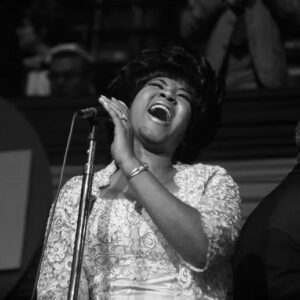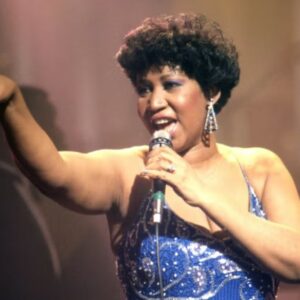The collaboration between actor Ryan Gosling and Danish director Nicolas Winding Refn has become one of the most intriguing and influential partnerships in contemporary cinema. In an era of cookie-cutter blockbuster films and hyper-commercialized storytelling, the duo’s work stands out as a beacon of artistic ambition, melding minimalist direction with emotionally complex, often silently intense performances. This partnership has not only catapulted both men into the spotlight but has also left an indelible mark on modern filmmaking, offering audiences a new, more contemplative brand of action and drama.
A Snapshot of Two Artists
Ryan Gosling, long known for his brooding yet charismatic performances, became a household name with his role in The Notebook (2004), but it was his later work that demonstrated his evolution into one of Hollywood’s most versatile and daring actors. Known for his reluctance to play conventional roles, Gosling has often chosen projects that allow him to explore deeper, darker facets of his characters’ psyches.
On the other hand, Nicolas Winding Refn, a director with a distinctive visual style and an affinity for violence and philosophical undertones, had built a cult following with films like Pusher (1996) and Bronson (2008). His aesthetic is characterized by bold color palettes, slow-burn tension, and an often disorienting mix of music, sound, and visual cues. Refn’s films are marked by a stark, almost otherworldly atmosphere, where silence speaks as loudly as dialogue, and action is often more cerebral than physical.
Together, Gosling and Refn have formed a creative partnership that has been as unconventional as their individual careers. Their collaborations have become emblematic of a unique approach to filmmaking—one that privileges mood over exposition and characters over plot. In examining their shared works, it’s clear that they’ve forged a symbiotic relationship, with each enhancing the other’s artistic sensibilities to produce films that feel simultaneously timeless and radical.
Their First Collaboration: Drive (2011)
The film that first brought Ryan Gosling and Nicolas Winding Refn together was Drive (2011), a neo-noir thriller that quickly became a cultural touchstone. Based on the novel by James Sallis, Drive introduced the world to a quiet, mysterious driver—simply known as the Driver—played by Gosling. The film is a masterclass in minimalism, with Refn using long, silent sequences and sparsely composed dialogue to build tension and intimacy. In Gosling’s performance, we witness the evolution of the actor into a more contemplative figure, one whose actions are far more telling than his words.
The plot of Drive is simple on paper: a Hollywood stuntman moonlights as a getaway driver, becomes embroiled in a criminal underworld, and faces moral dilemmas that lead him down a violent path. Yet, what makes the film stand out is the way Refn and Gosling subvert expectations of genre. In a film that could have easily turned into a conventional action thriller, Refn’s direction creates a sense of isolation and emotional intensity that gives the film a brooding, almost melancholic atmosphere. Gosling’s Driver, with his limited expressions and muted affect, conveys a deep inner conflict that never fully materializes in the form of overt dialogue, but rather in the silent pauses between moments of high tension.
The film’s soundtrack—featuring a haunting mix of synthwave and atmospheric electronica—became a defining element of Drive’s success. Music plays an integral role in establishing the tone, underscoring the emotional and psychological states of the characters. The iconic track “A Real Hero” by College and Electric Youth, along with Cliff Martinez’s score, adds a layer of romantic nostalgia and melancholy to the otherwise gritty action scenes, making the film feel both contemporary and retro, familiar and unsettling.
Drive became a sleeper hit and earned Gosling and Refn a devoted following, particularly among cinephiles and critics who admired the film’s stripped-down narrative and the depth of its characters. For Gosling, it was a defining role—one that showcased his ability to convey complex emotions with minimal dialogue—and for Refn, it marked the arrival of a director who had fully realized his distinctive cinematic language.
Second Collaboration: Only God Forgives (2013)
If Drive was the film that introduced the Gosling-Refn partnership to the world, Only God Forgives (2013) was the film that solidified it—albeit in a far more divisive and enigmatic form. Where Drive was sleek, stylish, and contained in its emotional landscape, Only God Forgives veered into the realm of the abstract and experimental. In this film, Gosling plays Julian, a drug dealer in Bangkok who must come to terms with the death of his brother at the hands of a local police officer. His mother, played by Kristin Scott Thomas, urges him to seek revenge, but Julian is a man broken by his past and unsure of how to act in a world that seems governed by violence and inscrutable fate.
While Drive had been a critical and commercial success, Only God Forgives was met with a far more mixed reception. The film’s deliberate pacing, cryptic symbolism, and morally ambiguous characters were alienating to some viewers, but for others, it was a daring exploration of existential themes. The violence in Only God Forgives is not merely graphic; it is symbolic, almost ritualistic, in its execution. The film’s visual style is even more pronounced than in Drive, with its neon-lit streets and stark, sometimes surreal imagery creating an overwhelming sense of both beauty and dread.
Gosling’s performance in Only God Forgives is as muted as ever, but his character’s inner turmoil is far more complex than in Drive. Julian is a man unable to escape his past or his familial obligations, and Gosling conveys this impotence with an almost ghostly stillness. The film’s themes of vengeance, forgiveness, and the search for redemption are abstracted into a visual and auditory experience, making it a polarizing piece that drew both admiration and frustration from critics and audiences alike.
Despite its mixed reception, Only God Forgives solidified the artistic vision that Refn and Gosling were carving out together. They were not interested in giving audiences simple answers or easy resolutions. Instead, they were committed to exploring dark, uncomfortable themes through a language of visual storytelling and emotional understatement. In many ways, Only God Forgives could be seen as a more extreme, even purgatorial continuation of the ideas explored in Drive.
Thematic Consistency and Artistic Vision
Both Drive and Only God Forgives explore similar thematic terrain, particularly the intersection of violence, redemption, and human vulnerability. In both films, characters are confronted with choices that have life-altering consequences, and in both films, the protagonists seem doomed to repeat patterns of self-destruction. Refn’s direction brings these themes to life with striking imagery, while Gosling’s understated performances allow the emotional depth of these characters to unfold in ways that are more unsettling than cathartic.
The consistent thematic thread throughout their collaboration is the exploration of human beings’ inner lives—those quiet moments of reflection that are often left unsaid. Gosling’s performances in both films are marked by a deep sense of silence, an ability to convey complex emotions through a glance, a gesture, or a stillness. This contrasts sharply with the intense, atmospheric worlds that Refn creates around him, worlds filled with neon lights, lurid violence, and ominous soundscapes. The contrast between Gosling’s calm, brooding presence and the heightened, sometimes surreal landscapes is central to the success of their partnership. It is as if the violence and chaos of the world around the characters is mirrored by the stillness within them, creating an emotional and psychological tension that lingers long after the credits roll.
Impact on Their Careers
For both Ryan Gosling and Nicolas Winding Refn, their collaborations have been transformative. Gosling, whose early career was defined by romantic leads and dramatic roles, has found a niche in playing complex, often morally ambiguous characters in films that refuse to cater to traditional Hollywood sensibilities. His work with Refn has solidified him as one of the most interesting actors of his generation, one who is willing to take risks and explore darker, more experimental material.
For Refn, Drive and Only God Forgives have positioned him as one of the boldest and most visually inventive directors of his era. His films have become a touchstone for filmmakers who wish to explore similar themes of violence and existentialism, though few have been able to match his particular brand of stylish nihilism.
Possible Future Projects
While Gosling and Refn have not collaborated on a project since Only God Forgives, there has been much speculation about whether they will reunite for a third film. Both men have expressed admiration for each other’s work, and the potential for another partnership is tantalizing. Given the ongoing evolution of both artists, a future collaboration could see them pushing even further into experimental territory, possibly even leaving behind the shadows of neo-noir for more uncharted territory.
Conclusion
The artistic synergy between Ryan Gosling and Nicolas Winding Refn represents a modern example of filmmaking that values mood, emotion, and style over narrative conventions. Their partnership has not only elevated their respective careers but has also made an indelible impact on the landscape of contemporary cinema. Through their work, they have crafted a unique space where silence speaks louder than words, where violence is not just an event but a philosophical inquiry, and where redemption is as elusive as it is necessary. Whether or not they choose to collaborate again, their films will continue to resonate with audiences, challenging and redefining the boundaries of modern cinema.





